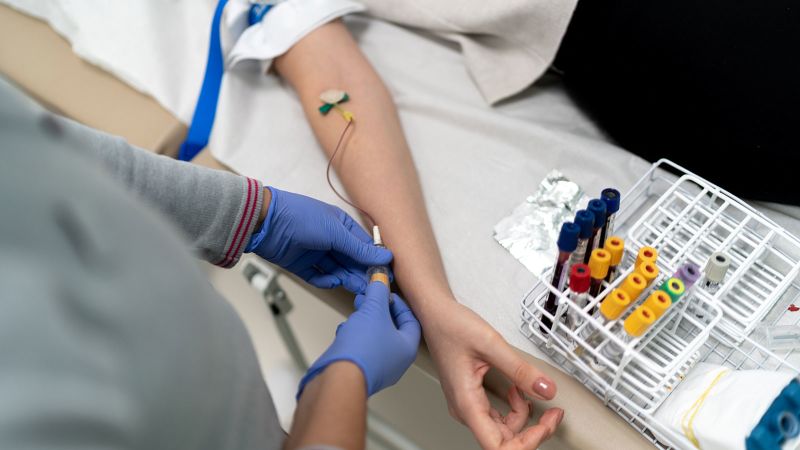In a groundbreaking study, researchers suggest that measuring three specific blood biomarkers during midlife could provide women with a better understanding of their risk for major cardiovascular events, such as heart attacks and strokes, significantly earlier than current risk calculators.
Though heart disease ranks low on the list of concerns for many women regarding their health, experts assert it deserves more attention. Heart disease is the leading cause of death for women in the United States, claiming the lives of over 310,000 women, approximately one in every five female deaths, in 2021, as reported by the U.S. Centers for Disease Control and Prevention (CDC). Research indicates that around 80% of women aged 40 to 60 are living with at least one risk factor for coronary artery disease, yet only about half recognize heart disease as their greatest health threat.
Experts believe that improved early risk assessment could encourage women to take vital steps toward enhancing their health before serious issues arise. The tests highlighted in the study are readily available and affordable, costing between $10 and $12 each, according to Dr. Paul Ridker, director of the Center for Cardiovascular Disease Prevention at Brigham and Women’s Hospital.
The study reveals that the combined results of these three tests can predict cardiovascular risk in seemingly healthy women up to 30 years before a significant event occurs, a finding Ridker described as astonishing. He noted, “The fact that it works in primary prevention is mind-blowing to me,” emphasizing the early signs of atherosclerotic disease in younger women.
Published in the New England Journal of Medicine and presented at the European Society of Cardiology conference in London, this extensive study tracked nearly 40,000 women for 30 years beginning in the early 1990s. Funded by the U.S. National Institutes of Health, the study participants, primarily health professionals, had an average age of 55 but included women as young as 40. Among them, 25% had high blood pressure, approximately 12.5% were current smokers, nearly 3% had a diabetes history, and around 14% had a parent who suffered a heart attack before age 65.
At the study’s outset, approximately 28,000 women provided blood samples used to measure three key biomarkers: low-density lipoprotein (LDL), known as “bad” cholesterol; high-sensitivity C-reactive protein (CRP); and lipoprotein(a) [LP(a)]. Each of these biomarkers influences cardiovascular risk differently, with LDL contributing to fatty buildup in arteries and serving as a classic risk measure. High-sensitivity CRP indicates inflammation in blood vessels, a response to cholesterol accumulation, while LP(a) can create artery-clogging plaques, with its levels being largely hereditary.
Ridker noted the synergy among these biomarkers, stating, “But they’re not independent of each other in terms of biologic explosion that they ignite.” Dr. Leslie Cho, director of the Women’s Cardiovascular Center at the Cleveland Clinic, stressed the significance of the additive effects of these risk factors, calling them “very interesting and incredibly potent.”
As the study progressed, the researchers identified that the women experienced approximately 3,600 major cardiovascular events, including heart attacks and strokes. They categorized the participants into quintiles based on their biomarker levels to assess the correlation between high levels and the occurrence of major cardiovascular events. This analysis showed that each biomarker was associated with an increased risk of cardiovascular disease, with inflammation being the most significant contributor.
Women with the highest levels of high-sensitivity CRP—over 5.18 milligrams per liter—were approximately 70% more likely to experience a major heart event than those with the lowest levels. Those exhibiting high LDL levels—over 151 milligrams per deciliter—faced a 36% higher risk, while women with high LP(a) levels—over 44 milligrams per deciliter—had a 33% increased risk of a major cardiovascular event. The risks compounded when all three biomarkers were elevated; such women were nearly three times as likely to experience a major heart event and nearly four times as likely to have a stroke compared to those without elevated levels.
“The reality is we continue to underdiagnose and undertreat women compared to men,” Ridker remarked, emphasizing the need for earlier identification and treatment of middle-aged women at elevated risk levels. He questioned the current guidelines that recommend starting statins for women at age 65 while beginning treatment for men at 50, labeling such a disparity “biologically silly.”
The study’s findings suggest that these biomarkers should be regularly assessed as a part of primary care, although Dr. Gina Lundberg, clinical director of the Women’s Heart Center at Emory University, noted that many doctors often overlook measuring CRP and LP(a) levels. She cautioned, “A lot of physicians never draw the c-reactive protein or the LP(a) levels, so they’re missing out on this information.”
Ridker advocates for universal screening for these biomarkers to raise awareness among healthcare providers. Though medications exist to lower LDL cholesterol and manage inflammation, specifically approved treatments for lowering LP(a) are still in development.
Independent experts have highlighted the study’s importance, noting that current risk calculators tend to underestimate heart disease risks in women. Dr. Sonia Tolani, co-director of the Columbia Women’s Heart Center, commented on the challenges of accurately assessing heart disease risk in women, particularly given that they often develop heart disease later in life, rendering traditional risk factors less effective.
However, the study carries limitations, including its homogeneity, as nearly all participants were White and health professionals with generally better healthcare access than the average population. Tolani raised concerns about the applicability of the findings to women from different socioeconomic backgrounds and minority groups, as different ethnicities may exhibit varying LP(a) levels.
Despite these limitations, Dr. Anum Minhas, director of Cardio-Obstetrics at Johns Hopkins, affirmed the study’s significance, particularly in addressing previously overlooked cardiovascular risk factors for women. As Ridker suggests, patients may want to discuss these tests with their physicians during check-ups, emphasizing the potential for earlier intervention in preventing heart disease.



